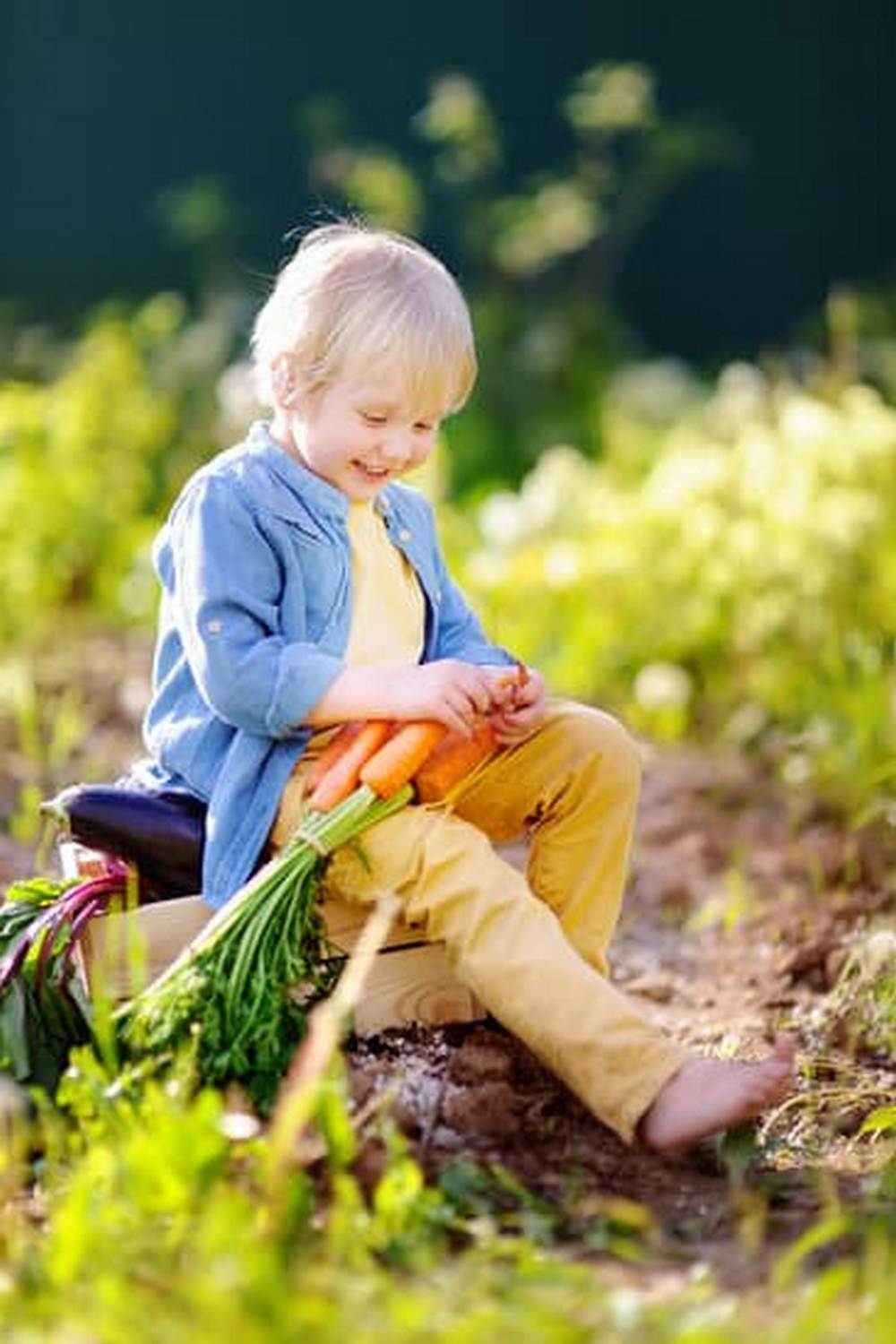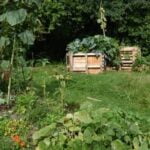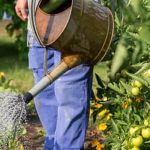As the gardening season transitions from summer to fall, many garden enthusiasts in Tennessee are turning to the UT Extension Fall Vegetable Gardens Program for guidance and support. With a focus on promoting sustainable gardening practices and providing expert advice, this program is an invaluable resource for those looking to cultivate a successful fall vegetable garden.
The UT Extension Fall Vegetable Gardens Program offers a wealth of benefits for gardeners of all skill levels. From extending the growing season to enjoying a bountiful harvest of fresh produce well into the autumn months, planting fall vegetables can be both rewarding and satisfying. Additionally, growing fall vegetables can help improve soil health, reduce pests and diseases, and save money on grocery bills.
When it comes to selecting the best vegetables to plant in the fall in Tennessee, participants in the UT Extension program have access to valuable information and recommendations. By choosing the right crops that thrive in cooler temperatures and shorter daylight hours, gardeners can ensure a successful harvest. Whether it’s leafy greens like kale and spinach or root vegetables like carrots and radishes, there are plenty of options to choose from for a vibrant fall garden.
Benefits of Growing Fall Vegetables in Your Garden
When it comes to gardening, fall is often an overlooked season for many individuals. However, there are numerous benefits to growing fall vegetables in your garden that shouldn’t be ignored. By participating in the UT Extension Fall Vegetable Gardens program, you can take advantage of the following benefits:
- Extended Growing Season: Planting fall vegetables allows you to extend your harvest beyond the typical summer months, providing fresh produce well into the cooler weather.
- Fresh and Flavorful Produce: Cool-season crops like kale, carrots, and Brussels sprouts tend to develop sweeter flavors as temperatures drop, making them a delicious addition to your meals.
- Healthier Soil: Planting fall vegetables helps break up soil compaction and adds organic matter back into the soil, leading to healthier plants and improved overall soil quality.
In addition to these benefits, growing fall vegetables can also be a rewarding experience that allows you to connect with nature and enjoy the beauty of your garden during a quieter time of year. With proper planning and care, you can reap a bountiful harvest while embracing the changing seasons with your very own fall vegetable garden.
- Increased Variety: Fall planting offers a different selection of crops compared to spring and summer, allowing you to experiment with new vegetables and diversify your garden produce.
- Cost-Effective Gardening: Since many gardening supplies are often on sale during the fall season, starting a vegetable garden in the fall can be more cost-effective than investing in it during other times of the year.
- Less Maintenance: Cooler temperatures and fewer pests in the fall mean less watering and pest control needed for your garden, making it easier to maintain your plants as they grow.
Best Vegetables to Plant in the Fall in Tennessee
When it comes to planting a fall vegetable garden in Tennessee, there are several options that thrive in the cooler temperatures of the autumn season. From leafy greens to root vegetables, choosing the right crops can lead to a bountiful harvest. Some of the best vegetables to plant in the fall in Tennessee include:
Leafy Greens
One of the most popular choices for fall planting is leafy greens such as lettuce, spinach, and kale. These cool-season vegetables prefer the lower temperatures of fall and can withstand light frosts. Planting leafy greens in your fall garden not only provides you with fresh salads but also adds color and texture to your landscape.
Root Vegetables
Root vegetables like carrots, beets, and radishes are excellent choices for a fall vegetable garden in Tennessee. These crops can be planted later in the season and continue to grow even as temperatures start to drop. Root vegetables are not only delicious but also packed with nutrients, making them a great addition to your autumn meals.
Brassicas
Brassicas such as broccoli, cauliflower, and Brussels sprouts are cold-hardy vegetables that do well in Tennessee’s fall climate. These plants actually benefit from cooler temperatures as it enhances their flavor. By planting brassicas in your fall garden, you can enjoy a variety of cruciferous vegetables that are not only tasty but also nutritious for you and your family.
By choosing a mix of these vegetables for your fall garden in Tennessee, you can ensure a diverse and delicious harvest that will feed you well into the winter months. With proper care and maintenance, these crops can thrive in the autumn season under the guidance of UT Extension Fall Vegetable Gardens program.
How to Prepare Your Garden for Fall Planting
Fall is a fantastic time to start preparing your garden for planting fall vegetables in Tennessee with the help of UT Extension. Properly preparing your garden ensures that your plants have the best possible environment to thrive and produce a bountiful harvest. Here are some steps you can take to get your garden ready for fall planting:
- Clean Up: Start by removing any debris, weeds, or dead plants from your garden beds. This will help prevent pests and diseases from taking hold and give your new plants room to grow.
- Amend Soil: Test your soil and add any necessary amendments to ensure it has the right nutrients for your fall vegetables. Consider adding compost or aged manure to improve soil structure and fertility.
- Plan Your Layout: Decide which vegetables you want to plant and map out where they will go in your garden. Consider factors like spacing requirements, sun exposure, and companion planting.
Properly preparing your garden sets the stage for a successful fall vegetable garden with high yields and healthy plants. By following these steps and utilizing resources provided by UT Extension, you can create an optimal growing environment for your fall vegetables.
Tips for Maximizing Yields in Your Fall Vegetable Garden
Fall vegetable gardening can be a rewarding and fruitful experience, especially with the guidance and support from UT Extension Fall Vegetable Gardens program. To maximize yields in your fall vegetable garden, there are several tips and strategies that you can implement to ensure a successful harvest. One key factor to consider is proper soil preparation.
Before planting your fall vegetables, make sure you have well-draining soil that is rich in organic matter. This will provide your plants with essential nutrients for healthy growth.
In addition to soil quality, spacing your plants correctly is crucial for maximizing yields in your fall vegetable garden. Overcrowding can lead to competition for resources such as water and sunlight, resulting in stunted growth and smaller harvests. By following recommended spacing guidelines for each type of vegetable you plant, you can optimize production and yield higher quantities of fresh produce.
Another tip for maximizing yields in your fall vegetable garden is regular maintenance and care. This includes watering consistently, monitoring for pests and diseases, and providing necessary support such as staking or trellising for vine crops. By staying on top of maintenance tasks throughout the growing season, you can ensure that your plants are healthy and productive until harvest time.
| Tips for Maximizing Yields | In Your Fall Vegetable Garden |
|---|---|
| Proper soil preparation | Well-draining soil rich in organic matter |
| Correct spacing | Avoid overcrowding for optimal growth |
| Regular maintenance | Consistent watering and pest/disease monitoring |
Common Pests and Diseases to Watch Out for in Fall Vegetable Gardens
When cultivating a fall vegetable garden through the UT Extension program, it is essential to be aware of common pests and diseases that may impact your crops. One prevalent pest in fall gardens is the cabbage worm, which can quickly destroy cabbage, broccoli, and other cruciferous vegetables. These pests can be controlled through organic methods such as applying Bacillus thuringiensis (Bt) or handpicking.
Another common issue in fall vegetable gardens is powdery mildew, a fungal disease that affects plants like cucumbers, squash, and melons. To prevent powdery mildew from spreading, ensure proper spacing between plants for good air circulation and avoid overhead watering. Additionally, downy mildew can be a concern for leafy greens like spinach and lettuce in the fall. Applying fungicides labeled for this disease can help manage its impact on your crops.
One more pest to watch out for in fall vegetable gardens is the aphid, which can infest a variety of plants such as kale, Swiss chard, and turnips. Aphids feed on plant sap and excrete honeydew, attracting ants and promoting sooty mold growth. Using insecticidal soap or neem oil can help control aphid populations without harming beneficial insects in your garden.
| Pests & Diseases | Control Methods |
|---|---|
| Cabbage Worm | Bacillus thuringiensis (Bt), handpicking |
| Powdery Mildew | Proper spacing for air circulation, avoid overhead watering |
| Aphids | Insecticidal soap, neem oil |
Success Stories From UT Extension Fall Vegetable Gardens Participants
Overcoming Challenges
One success story from a participant in the UT Extension Fall Vegetable Gardens program involves overcoming challenges in their gardening journey. Despite facing initial setbacks like poor soil quality and pest infestations, this individual persevered with the guidance and support provided by UT Extension experts. By implementing strategies learned through the program, such as integrated pest management techniques and soil amendments, they were able to turn their garden around and achieve a bountiful harvest of fall vegetables.
Community Engagement
Another inspiring success story comes from a group of neighbors who joined forces to participate in the UT Extension Fall Vegetable Gardens program together. Through collaboration and shared knowledge, these gardeners not only grew a diverse array of fall vegetables but also fostered a strong sense of community within their neighborhood. By exchanging surplus produce and gardening tips, they were able to enhance not only their individual yields but also their social connections.
Personal Growth and Well-Being
For many participants in the UT Extension Fall Vegetable Gardens program, the experience goes beyond just growing food – it also provides an opportunity for personal growth and well-being. Engaging with nature, learning new skills, and nurturing plants can have therapeutic effects on mental health and overall well-being.
Participants have reported feeling a sense of accomplishment, relaxation, and satisfaction from tending to their fall vegetable gardens with the help of UT Extension resources and guidance. This holistic approach to gardening underscores the importance of not just what you grow but how it contributes to your overall quality of life.
Resources and Support Offered by UT Extension for Fall Vegetable Gardeners
Fall vegetable gardening can be a rewarding experience, but it can also come with its own set of challenges. Luckily, the UT Extension Fall Vegetable Gardens Program offers a wealth of resources and support to help gardeners navigate their way through the fall growing season. Whether you are a beginner or an experienced gardener, UT Extension provides valuable information and assistance to ensure your fall vegetable garden thrives.
One of the key resources offered by UT Extension is access to expert advice from horticulturists and agriculture specialists. These knowledgeable professionals can provide guidance on everything from selecting the right vegetables for your garden to troubleshooting common gardening problems. By tapping into this expertise, you can make informed decisions that will lead to a successful fall harvest.
Additionally, UT Extension offers a variety of educational materials and workshops specifically tailored for fall vegetable gardeners. These resources cover topics such as soil health, plant nutrition, pest management, and more. By taking advantage of these opportunities, gardeners can expand their knowledge and skills, ultimately leading to a more bountiful harvest. With UT Extension’s support, you can confidently embark on your fall gardening journey and reap the rewards of your efforts.
Conclusion
In conclusion, embracing the season with the UT Extension Fall Vegetable Gardens program is a rewarding and fulfilling experience for gardeners in Tennessee. By participating in this program, gardeners not only benefit from expert guidance on planting fall vegetables but also receive valuable support and resources to ensure successful harvests. The numerous benefits of growing fall vegetables extend beyond just having fresh produce; they also contribute to local food sustainability, environmental conservation, and healthy eating habits.
As highlighted throughout this article, the best vegetables to plant in the fall in Tennessee include a variety of greens, root vegetables, and herbs that thrive in the region’s climate. With proper preparation of the garden bed and strategic planning for maximizing yields, gardeners can enjoy a bountiful harvest well into the cooler months. Additionally, being aware of common pests and diseases that may affect fall vegetable gardens is crucial for maintaining plant health and productivity.
The success stories shared by participants of the UT Extension Fall Vegetable Gardens program serve as testimonials to the program’s effectiveness in helping gardeners achieve their gardening goals. Through ongoing support, educational resources, and community engagement opportunities provided by UT Extension, gardeners are empowered to continue learning and improving their gardening skills.
Overall, investing time and effort into fall vegetable gardening with UT Extension is a worthwhile endeavor that cultivates a deeper connection to nature and promotes sustainable living practices.
Frequently Asked Questions
When Should I Start My Fall Vegetable Garden?
The optimal time to start your fall vegetable garden depends on the first frost date in your area. Generally, it’s recommended to start planting around 6-8 weeks before the first expected frost. This will give your vegetables enough time to mature before temperatures drop too low.
What Can I Plant in September in Utah?
In September in Utah, you can plant a variety of vegetables that thrive in the cooler fall weather. Some suitable options include lettuce, spinach, kale, radishes, carrots, beets, and peas. These vegetables can withstand the dropping temperatures and continue to grow well into the fall season.
What Can I Add to My Vegetable Garden in the Fall?
There are several things you can add to your vegetable garden in the fall to improve soil quality and help your plants flourish. Consider incorporating compost or organic matter to enrich the soil and provide essential nutrients for your vegetables.
Additionally, cover crops like winter rye or clover can help prevent soil erosion and suppress weeds during the dormant winter months. These additions will benefit your garden both immediately and in the long term.

If you’re looking to get into vegetable gardening, or are just looking for some tips on how to make your current garden better, then you’ve come to the right place! My name is Ethel and I have been gardening for years. In this blog, I’m going to share with you some of my best tips on how to create a successful vegetable garden.





